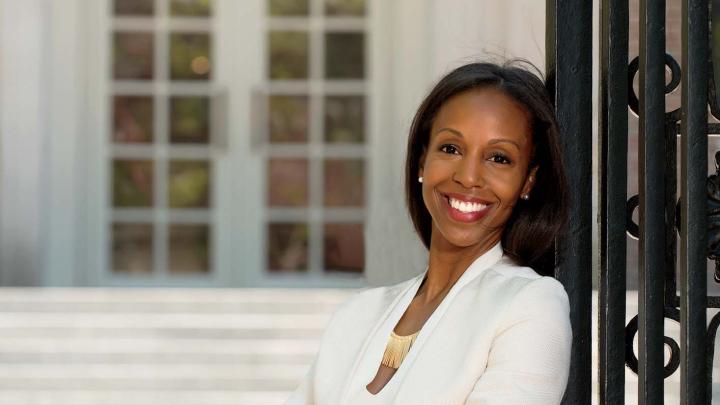Sarah Lewis ’01 remembers being approached by painter Jacob Lawrence while on a family visit to the Museum of Modern Art in New York. “I was very young—tiny—and I remember him breaking away from whatever storied crowd was around him, just to say hi to this African-American family in the museum.” Lewis’s parents weren’t artists themselves, but “They made sure I understood the importance of African-American culture.” Now assistant professor of history of art and architecture and African American studies, Lewis grew up with interests in painting, photography, and dance, thinking she’d continue them at the College. Instead, she was drawn to the social and political dimensions of the arts. Her clarity of thought on race in the arts has earned her public recognition rare for her field. In her course “Vision and Justice,” students look at daguerreotypes commissioned by Harvard naturalist Louis Agassiz, who attempted to prove different races were descended from different lineages. “The categories of race and citizenship are deeply tied to the category of aesthetics,” Lewis explains. “These were photographs that were instrumentalized for racial science.” While working on her Ph.D. at Yale, she came upon a previously unstudied speech by Frederick Douglass, who lived during the birth of both racial science and photography. Douglass anticipated the power of that new medium not just to dehumanize, but also to “read African Americans back into the human family,” Lewis argues with arresting precision, her self-possession mirroring Douglass’s own. This was why he became the most photographed American man of the nineteenth century: “Not the most photographed African-American man—the most photographed American man.”
Sarah Lewis

Sarah Lewis
Photograph by Stu Rosner
You might also like
Historic Humor
University Archives to preserve Harvard Lampoon materials
Academia’s Absence from Homelessness
“The lack of dedicated research funding in this area is a major, major problem.”
The Enterprise Research Campus, Part Two
Tishman Speyer signals readiness to pursue approval for second phase of commercial development.
Most popular
More to explore
Exploring Political Tribalism and American Politics
Mina Cikara explores how political tribalism feeds the American bipartisan divide.
Private Equity in Medicine and the Quality of Care
Hundreds of U.S. hospitals are owned by private equity firms—does monetizing medicine affect the quality of care?
Construction on Commercial Enterprise Research Campus in Allston
Construction on Harvard’s commercial enterprise research campus and new theater in Allston







